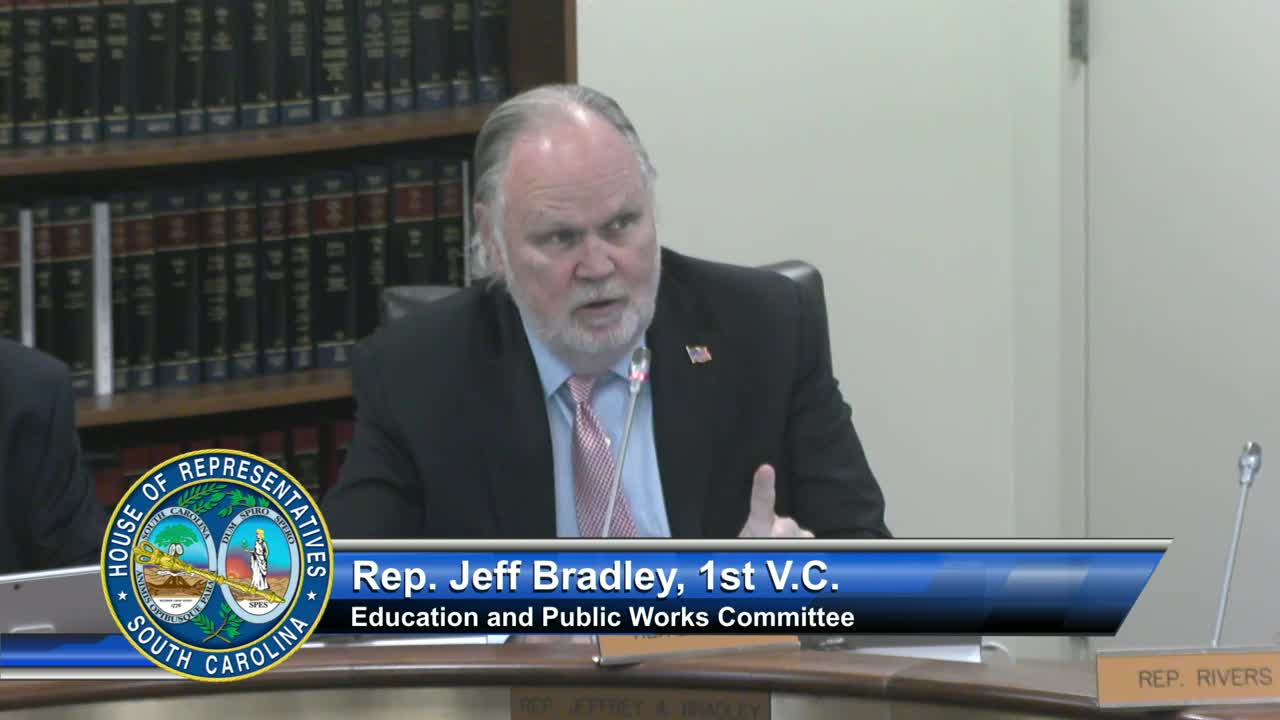South Carolina Education Department outlines new mission and vision for student success
April 29, 2025 | 2025 Legislative Meetings, South Carolina
This article was created by AI summarizing key points discussed. AI makes mistakes, so for full details and context, please refer to the video of the full meeting. Please report any errors so we can fix them. Report an error »

During a recent meeting of the South Carolina Legislature's Judiciary Committee, significant discussions centered on the integration of artificial intelligence (AI) in education and the importance of data-driven decision-making in improving student outcomes.
A key highlight was the emphasis on the development of a dashboard that will provide vital insights into educational performance. Committee members expressed optimism about its potential to enhance educational strategies, with one member urging the importance of this tool for tracking progress and making informed decisions.
The meeting also addressed the topic of student retention, particularly in relation to the recently passed science of reading legislation. This initiative mandates intentional retention strategies, moving beyond mere repetition of material to ensure that students receive tailored support. The positive impact of this approach was noted, with improvements in reading scores already being observed. The committee is hopeful that similar strategies will be applied to the Palmetto Math project, aiming to boost math proficiency across the state.
Furthermore, the committee acknowledged the collaborative efforts between the State Department of Education and the Education Oversight Committee, which plays a crucial role in enforcing educational policies and measuring their effectiveness. This partnership is seen as essential for gathering and analyzing data that can drive improvements in educational opportunities for students.
As the meeting progressed, Philip Cease, the director of governmental affairs for the State Department of Education, presented the department's new mission and vision, which focus on serving students, supporting teachers, and engaging the community to ensure that every student is prepared to reach their full potential.
The discussions from this meeting underscore a commitment to leveraging technology and data to enhance educational outcomes in South Carolina, with a clear focus on intentional strategies that support student learning and retention. The next steps will involve implementing these initiatives and monitoring their effectiveness to ensure continuous improvement in the state's educational landscape.
A key highlight was the emphasis on the development of a dashboard that will provide vital insights into educational performance. Committee members expressed optimism about its potential to enhance educational strategies, with one member urging the importance of this tool for tracking progress and making informed decisions.
The meeting also addressed the topic of student retention, particularly in relation to the recently passed science of reading legislation. This initiative mandates intentional retention strategies, moving beyond mere repetition of material to ensure that students receive tailored support. The positive impact of this approach was noted, with improvements in reading scores already being observed. The committee is hopeful that similar strategies will be applied to the Palmetto Math project, aiming to boost math proficiency across the state.
Furthermore, the committee acknowledged the collaborative efforts between the State Department of Education and the Education Oversight Committee, which plays a crucial role in enforcing educational policies and measuring their effectiveness. This partnership is seen as essential for gathering and analyzing data that can drive improvements in educational opportunities for students.
As the meeting progressed, Philip Cease, the director of governmental affairs for the State Department of Education, presented the department's new mission and vision, which focus on serving students, supporting teachers, and engaging the community to ensure that every student is prepared to reach their full potential.
The discussions from this meeting underscore a commitment to leveraging technology and data to enhance educational outcomes in South Carolina, with a clear focus on intentional strategies that support student learning and retention. The next steps will involve implementing these initiatives and monitoring their effectiveness to ensure continuous improvement in the state's educational landscape.
View full meeting
This article is based on a recent meeting—watch the full video and explore the complete transcript for deeper insights into the discussion.
View full meeting